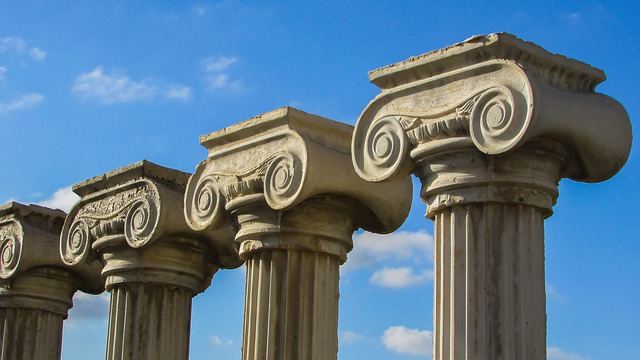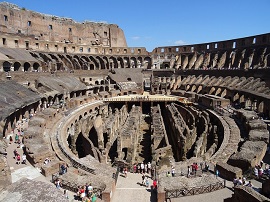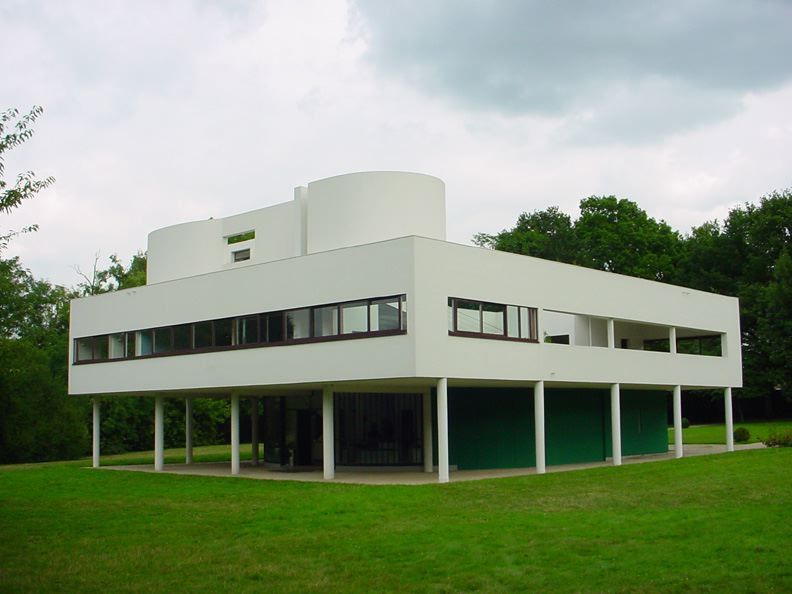Architectural history

|
Architectural history is the study of building through the ages. It comprises architecture and architectural styles ranging from pre-ancient civilisations to contemporary architecture. A subject in its own right, the study of architectural history forms an important component of an architect’s education, although it is a subject that is also accessible to those outside mainstream architecture.
Architecture is a by-product of human existence and every age has its own distinct architecture, whether that is defined by prevailing ideas, construction materials, technology or new building types. The study of architectural history, therefore, is not just about a study of the buildings themselves but also the conditions – social, economic, political and material – that influenced those buildings. It also involves the study of stylistic and spatial expression.
[edit] Studying architectural history

|
The classic approach to studying architectural history adopted by schools of architecture and text books, involves studying – or at least having an acquaintance with – past historical periods. They are usually studied individually, progressing from the earliest to the most recent periods.
It is quite possible to study an architectural period without studying the preceding one although this will not give a complete understanding of the period being studied. For example, someone who is not acquainted with classical Greek architecture would be ill-advised to jump into the Roman period as the latter drew much of its inspiration from the former.
Architectural periods are usually divided up according to style and date and may typically cover the following:
- Pre-classical architecture (including Egyptian)
- Classical architecture (Greek and Roman).
- Pre-Romanesque (including Saxon)
- Byzantine.
- Romanesque.
- Gothic. (including Perpendicular and other variants).
- Islamic (including Ottoman and other Asian architecture).
- Renaissance.
- Baroque.
- Mannerist.
- Rococo.
- Georgian.
- Neoclassical.
- Victorian.
- Edwardian.
- Art Nouveau.
- Modern movement (including Constructivism and Deconstructivism).
- Post modernism.
For more information see: Architectural styles.
The architecture of other geographical regions may also be added eg, African, American, Chinese and Japanese and many others.

|
[edit] Why an understanding of architectural history is important
Knowledge of architectural history gives an understanding of the ideas that were important to and shaped past societies. A building can reveal much about the society that produced it. For example, a tall building would be tall for a reason: what idea did it express that required such height, usually at great expense in terms of cost, not to mention the lives lost to achieve it? Gothic cathedrals were the tallest buildings of their day because religion both ordered and regulated society. Today, the tallest buildings are usually office buildings, an indication of how important commerce is to the modern world.
Why did some medieval houses include a jetty (a small projection or overhang) at the first and sometimes second floor levels? The reasons are bound up not only with gaining a little more living space but also about conspicuous consumption, an ostentatious feature to express the owner’s wealth and prestige.
Medieval windows and stained glass are typically characterised by small glass elements held in place by lead cames. This was because glass was not only very expensive but also because it could not be manufactured in large sizes.
The gardens at the 17th century Palace of Versailles just outside Paris follow the then French style of being highly formal and ordered, expressing a mastery over nature. This was an important concept in an age of enlightenment when great progress was made in philosophy and the sciences, and architects and designers were keen to express such notions.
Le Corbusier’s houses often feature large, ribbon windows and open plans. The windows allow light into the building because it was recognised that access to light and fresh air were conducive to good health. Such considerations, hitherto not recognised as important in past societies, were a direct result of progress in medicine and health generally. Raising the house on pilotis (columns) was not just a stylistic feature but meant the damp conditions traditionally associated with ground floors could be avoided, and cars could be parked underneath.
Understanding architectural history allows an insight not only into past built form and the ideas behind it but also the capabilities and limitations of past societies. Perhaps as importantly, history can comprise an eclectic resource, offering design ideas and architectural elements that can be modified and reused in contemporary design.
[edit] Related articles on Designing Buildings
- Aesthetics and architecture.
- Antiquities.
- Architect.
- Architectural design.
- Architecture.
- Architectural styles.
- Classical orders.
- Classical architecture
- Design methodology.
- Eclecticism.
- English architectural stylistic periods.
- Etruscan architecture.
- Form follows function.
- IHBC-SAHGB announce 2021 annual research award winner.
- Modern building.
- Modernist architecture.
- Running dog pattern.
- The architectural profession.
- The history of fabric structures.
- Types of building.
- Vernacular architecture.
Featured articles and news
The UK's Modern Industrial Strategy: A 10 year plan
Previous consultation criticism, current key elements and general support with some persisting reservations.
Building Safety Regulator reforms
New roles, new staff and a new fast track service pave the way for a single construction regulator.
Architectural Technologist CPDs and Communications
CIAT CPD… and how you can do it!
Cooling centres and cool spaces
Managing extreme heat in cities by directing the public to places for heat stress relief and water sources.
Winter gardens: A brief history and warm variations
Extending the season with glass in different forms and terms.
Restoring Great Yarmouth's Winter Gardens
Transforming one of the least sustainable constructions imaginable.
Construction Skills Mission Board launch sector drive
Newly formed government and industry collaboration set strategy for recruiting an additional 100,000 construction workers a year.
New Architects Code comes into effect in September 2025
ARB Architects Code of Conduct and Practice available with ongoing consultation regarding guidance.
Welsh Skills Body (Medr) launches ambitious plan
The new skills body brings together funding and regulation of tertiary education and research for the devolved nation.
Paul Gandy FCIOB announced as next CIOB President
Former Tilbury Douglas CEO takes helm.
UK Infrastructure: A 10 Year Strategy. In brief with reactions
With the National Infrastructure and Service Transformation Authority (NISTA).
Ebenezer Howard: inventor of the garden city. Book review.
The Grenfell Tower fire, eight years on
A time to pause and reflect as Dubai tower block fire reported just before anniversary.
Airtightness Topic Guide BSRIA TG 27/2025
Explaining the basics of airtightness, what it is, why it's important, when it's required and how it's carried out.
Construction contract awards hit lowest point of 2025
Plummeting for second consecutive month, intensifying concerns for housing and infrastructure goals.
Understanding Mental Health in the Built Environment 2025
Examining the state of mental health in construction, shedding light on levels of stress, anxiety and depression.
The benefits of engaging with insulation manufacturers
When considering ground floor constructions.
Lighting Industry endorses Blueprint for Electrification
The Lighting Industry Association fully supports the ECA Blueprint as a timely, urgent call to action.

























